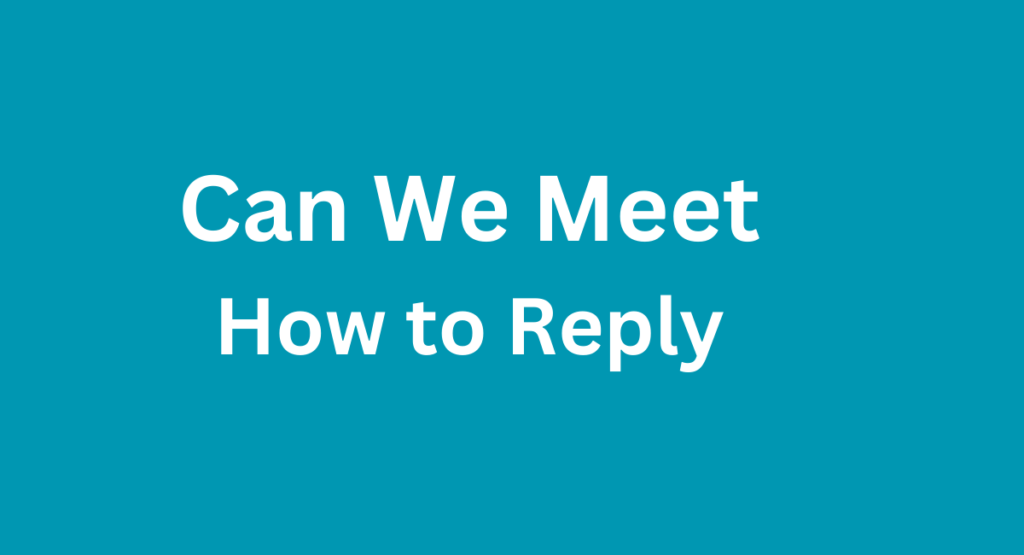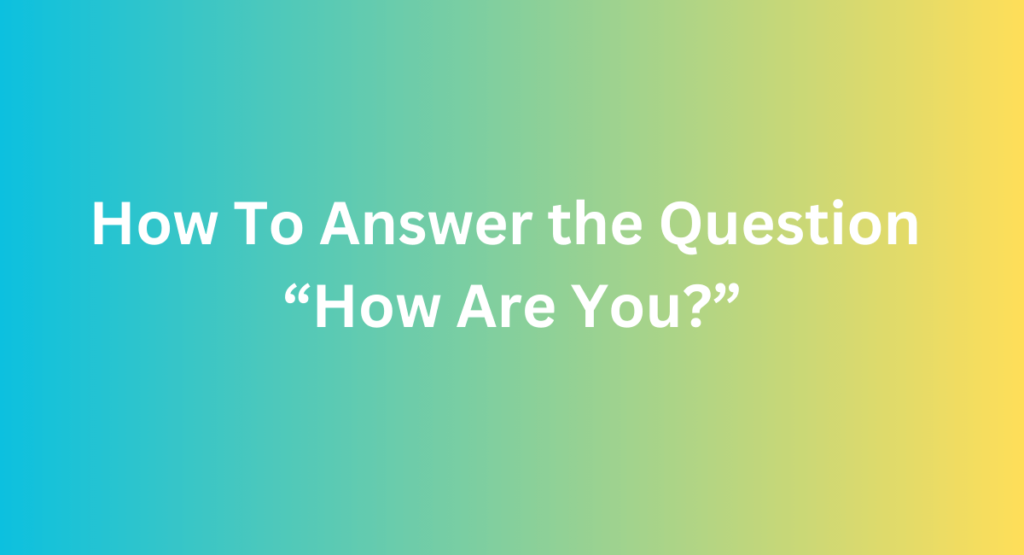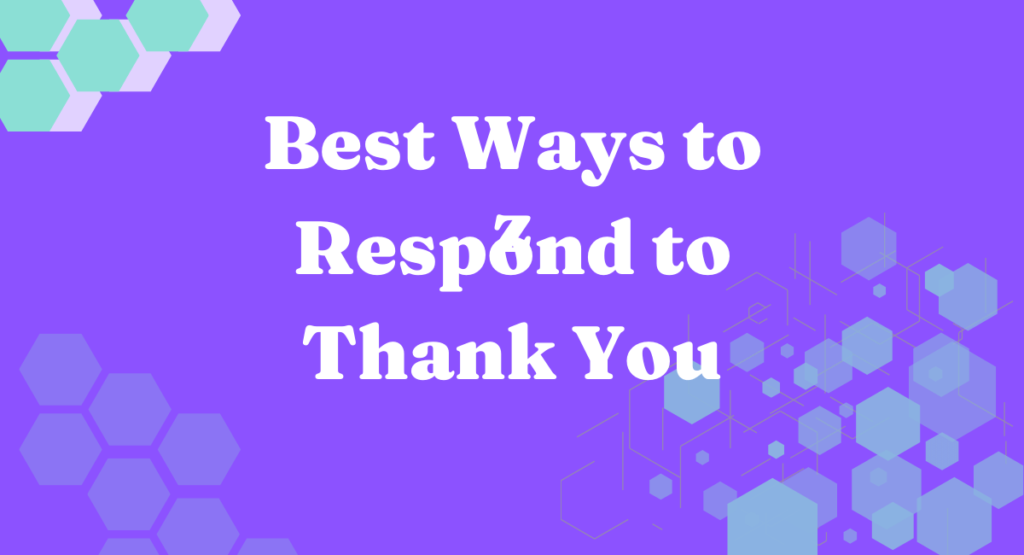Sure, I’m open to meeting up. When someone asks to meet, it’s important to respond politely and indicate your availability.
If you can meet at the requested time, simply say “Sure, I can meet at [insert the requested time]. See you then!” It’s always a good idea to confirm the details and location of the meeting to ensure a successful meetup.
On the other hand, if you are unable to meet or not interested, it’s best, to be honest and politely decline the invitation.
Different Ways To Respond
Here are different ways to respond to the question “Can we meet?”:
1. **Positive and Enthusiastic:**
– “Absolutely! I’d love to meet up. When and where works for you?”
2. **Suggesting a Specific Time and Place:**
– “Sure thing! How about we meet for coffee this weekend at [a specific cafe]?”
3. **Expressing Interest and Availability:**
– “I’m up for it! What day/time are you thinking? I’ll check my schedule.”
4. **Asking for More Details:**
– “I’d be interested! Can you provide more details about when and where?”
5. **Offering Flexibility:**
– “Sure, I’m flexible. What works best for you, and where would you like to meet?”
6. **Expressing Excitement:**
– “Yes, I’ve been looking forward to catching up! When do you have in mind?”
7. **Suggesting Alternatives:**
– “I’d love to meet! If the suggested time doesn’t work, how about [suggesting an alternative]?”
8. **Checking Availability:**
– “I’m interested! Let me check my schedule and get back to you with a time that works.”
9. **Acknowledging and Confirming:**
– “Sure, let’s do it! Confirming the details would be great.”
10. **Polite Decline with Explanation:**
– “I appreciate the invitation, but I have a prior commitment. Can we plan for another time?”
Remember, the response can vary based on your schedule, comfort level,
Casual Response
Here are 10 casual responses to the question “Can we meet?”:
1. “Sure thing! When and where?”
2. “Absolutely! I’m down. What’s the plan?”
3. “Yeah, why not? What did you have in mind?”
4. “Of course! Let’s make it happen. What works for you?”
5. “Definitely up for it! What’s the scoop?”
6. “Sure, I’m game! When are you thinking?”
7. “Yeah, let’s meet up! Any preferences on time and place?”
8. “Totally! What’s the rendezvous plan?”
9. “Cool, count me in! What’s the agenda?”
10. “Sounds good! Let me know the details, and I’ll be there.”
Polite Response
Here are 10 polite responses to the question “Can we meet?”:
1. “Certainly! I would be delighted to meet you. When and where would suit you?”
2. “I appreciate the invitation! I’d love to meet. Could you share more details?”
3. “Thank you for suggesting a meeting! I’m interested. What time works for you?”
4. “I’m honored! Let’s plan to meet. Could you let me know the proposed date and place?”
5. “Your proposal to meet is very kind. I’m available; just let me know when and where.”
6. “I’m grateful for the invitation! I’d be happy to meet. Could we finalize the details?”
7. “I’m positively inclined to meet up! What time frame are you thinking of?”
8. “I’m genuinely interested! When and where would be convenient for you?”
9. “I appreciate your thoughtfulness in suggesting a meeting. I’m on board—what’s the plan?”
10. “Thank you for the invitation! I’d be pleased to meet. Could we discuss the specifics?”
Here are ten different responses you can use when someone asks for a meeting:
1. **Concise Confirmation:**
Hi [Sender’s Name],
Thanks for reaching out! I’m available for a meeting. Could you please share the agenda and propose a few suitable dates?
Best,
[Your Name]
2. **Expressing Interest:**
Hi [Sender’s Name],
I appreciate the invitation! I’m interested in the meeting. Could you provide more details, such as the purpose and any specific topics to be discussed?
Cheers,
[Your Name]
3. **Suggesting Options:**
Hi [Sender’s Name],
Sure, a meeting sounds great. I’m flexible with my schedule. Could you suggest a few times that work for you, or should I propose some options?
Regards,
[Your Name]
4. **Seeking Clarity:**
Hi [Sender’s Name],
Thanks for the invite. I’m interested but could use more information. What’s the agenda and preferred format (in-person, virtual, etc.)? Let’s ensure we make the most of our time.
Regards,
[Your Name]
5. **Expressing Enthusiasm:**
Hi [Sender’s Name],
I’m looking forward to the meeting! Could you share the agenda and any preparation needed? Let’s make it productive.
Best,
[Your Name]
Certainly! Here are five more responses:
6. **Requesting Details:**
Hi [Sender’s Name],
Thanks for the meeting invitation. I’m interested! Before we finalize, could you provide more details on the purpose and any specific items on the agenda?
Best regards,
[Your Name]
7. **Acknowledging and Confirming:**
Hi [Sender’s Name],
Appreciate the invite. I’m on board for the meeting. Could you confirm the date, time, and location or platform (virtual/in-person)?
Cheers,
[Your Name]
8. **Expressing Availability:**
Hi [Sender’s Name],
I’m available for a meeting. Feel free to suggest a time that works for you, or I can propose a few options. Looking forward to our discussion.
Regards,
[Your Name]
9. **Quick Confirmation:**
Hi [Sender’s Name],
Sure, count me in for the meeting. Could you share more details about the agenda and any specific expectations?
Thanks,
[Your Name]
10. **Grateful Acceptance:**
Hi [Sender’s Name],
Thank you for the meeting invitation. I’m excited to participate. Please let me know the details, and I’ll make sure to prepare accordingly.
Best,
[Your Name]
The Importance Of Meeting In Person
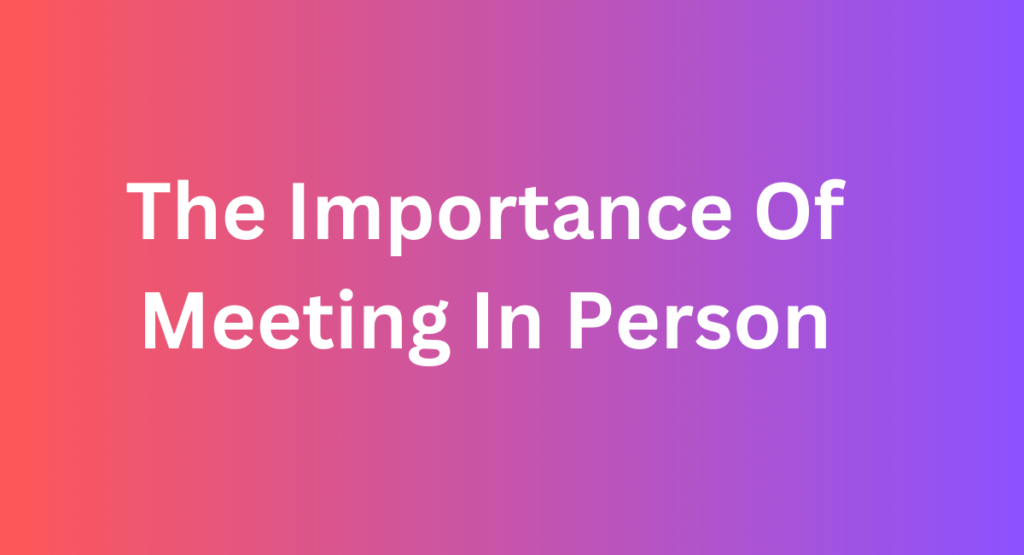
When it comes to building strong relationships, meeting in person holds great importance. It allows for better communication, and understanding of body language, and creates a more personal connection. By meeting face-to-face, we can establish trust and rapport, leading to more effective collaboration and successful interactions.
In our increasingly digital world, where communication is primarily conducted through screens and devices, the value of meeting in person should not be underestimated.
Meeting face-to-face allows for a depth of connection that cannot be replicated through virtual means. In this article, we will explore the importance of meeting in person and how it can build stronger connections, enhance communication, and foster trust and understanding.
Building Stronger Connections
Meeting in person provides an opportunity to establish a genuine connection with others. It allows for the exchange of non-verbal cues, such as facial expressions and body language, which are crucial in understanding the true meaning behind someone’s words.
These cues can often be lost or misinterpreted in written or virtual communication. Furthermore, meeting in person enables us to establish a personal connection and form a bond through shared experiences.
Enhancing Communication
Meeting in person enhances communication in several ways. Firstly, it allows for immediate feedback and clarification, reducing the chances of misunderstandings.
When communicating face-to-face, we can address any confusion or questions in real time, ensuring a smoother flow of conversation. Additionally, meeting in person enables us to fully engage in the conversation, without distractions from technology or multitasking.
This undivided attention promotes active listening and understanding, leading to more effective communication.
Fostering Trust And Understanding
Trust and understanding are critical components of any relationship, be it personal or professional. Meeting in person cultivates a sense of trust and authenticity.
It allows us to observe the other person’s behavior, integrity, and sincerity, which are difficult to gauge solely through written or virtual communication. Furthermore, meeting in person facilitates open and honest conversations, as it creates a safe and comfortable space for sharing thoughts, feelings, and concerns.
This transparency helps to build mutual understanding and empathy. In conclusion, meeting in person holds immense importance in today’s digital age.
It allows us to build stronger connections, enhance communication, and foster trust and understanding. While virtual communication has its advantages, meeting face-to-face provides a level of depth and authenticity that cannot be replicated. So, let’s prioritize meeting in person whenever possible to truly connect with others on a meaningful level.
Challenges In Meeting Online
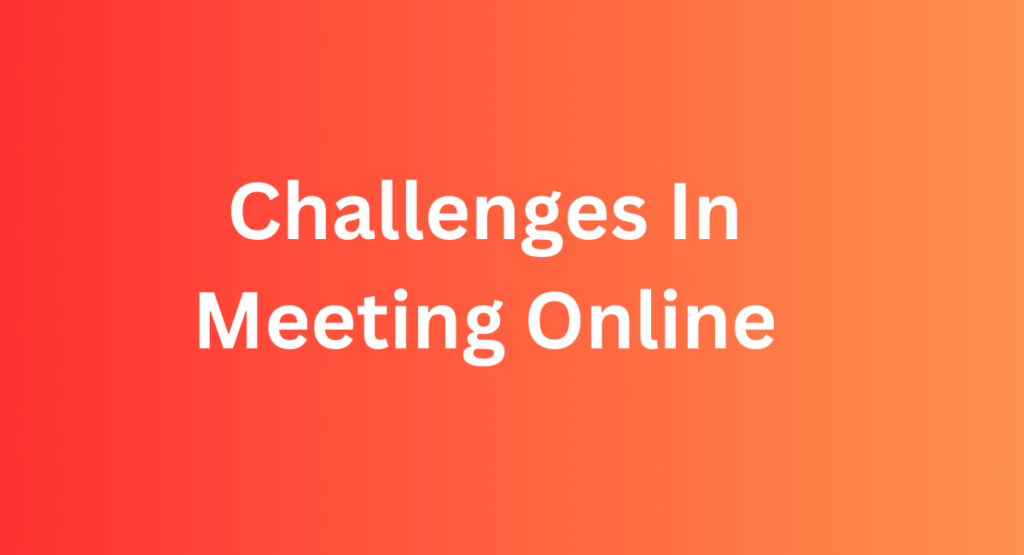
When someone asks “Can we meet? ” A polite response could be “Sure, I’m open to meeting up. Let’s set a date and time. ” This shows willingness and suggests moving forward with plans to meet.
Ambiguity In Text-based Communication
One of the major challenges in meeting online is the ambiguity that often arises in text-based communication. Unlike face-to-face conversations where tone and facial expressions can provide clarity, online conversations heavily rely on written words. This can lead to misinterpretations and misunderstandings, as it is difficult to gauge the tone and intention behind someone’s messages.
Lack Of Non-verbal Cues
In face-to-face interactions, we rely on non-verbal cues such as body language, facial expressions, and gestures to better understand and interpret the messages being conveyed. However, when meeting online, these non-verbal cues are completely absent, leaving room for confusion and miscommunication.
Difficulty In Conveying Tone And Emotion
Text-based communication cannot convey tone and emotion accurately. Without hearing someone’s voice or seeing their facial expressions, it can be challenging to discern whether a message is meant to be lighthearted, sarcastic, or serious. This can result in messages being misinterpreted, leading to misunderstandings or hurt feelings.
Strategies For Effective Online Communication
When someone asks “Can we meet? “, it’s important to reply politely and clearly. You can respond by saying “Sure, I’m open to meeting up” or “A meeting could be nice. Let’s set a date and time. ” It’s important to express your availability and interest in meeting.
When it comes to online communication, there are a few key strategies that can help ensure effective and meaningful interactions. Whether you’re communicating for work, personal relationships, or networking purposes, it’s important to be mindful of certain aspects to ensure clear and productive dialogue.
Using Video Conferencing Tools
In today’s digital age, video conferencing tools have become an essential part of online communication. Platforms such as Zoom, Microsoft Teams, and Google Meet allow individuals to connect face-to-face in a virtual setting.
Video conferencing tools offer several advantages, such as:
- Facial expressions and body language: Seeing someone’s facial expressions and body language can help convey emotions and intentions more accurately.
- Real-time interaction: Video conferences enable immediate, back-and-forth communication, simulating a more natural conversation.
- Building rapport: Connecting visually can help build rapport and establish stronger relationships, especially in professional settings.
By utilizing video conferencing tools, you can create a more engaging and personal online communication experience.
Being Mindful Of Tone And Language
When communicating online, it’s crucial to be mindful of your tone and language to avoid misinterpretation and potential conflicts. Since online conversations lack non-verbal cues, the way you express yourself through words becomes even more critical.
Consider the following tips:
- Choose your words carefully: Be concise and articulate, using clear and respectful language.
- Avoid sarcasm and humor: Humor and sarcasm can easily be misinterpreted, so it’s best to use straightforward and neutral language.
- Stay positive and respectful: Maintain a positive and open-minded tone, even during disagreements or challenging conversations.
By being mindful of your tone and language, you can foster a more harmonious and effective online communication environment.
Clarifying Ambiguities And Misunderstandings
Online communication can sometimes lead to ambiguities and misunderstandings due to the absence of visual and auditory cues. To overcome such challenges, it’s essential to clarify any uncertainties to ensure a shared understanding.
Here are a few techniques you can use:
- Ask for clarification: If something seems unclear or ambiguous, politely ask for clarification to avoid any misunderstandings.
- Summarize and reflect: Summarize the key points discussed to confirm everyone is on the same page.
- Use visuals or examples: When appropriate, use visuals or examples to enhance understanding and provide clarity.
By actively clarifying ambiguities and misunderstandings, you can ensure effective and efficient online communication.
The Value Of Face-to-face Meetings
The value of face-to-face meetings cannot be overstated. In today’s digital age, where communication is often conducted through screens and devices, meeting someone in person creates a lasting impact that is hard to replicate through any other means. In this section, we will explore the various benefits of face-to-face meetings, highlighting how they help in building stronger rapport, creating lasting impressions, and forming deeper connections.
Building Stronger Rapport
One of the primary advantages of face-to-face meetings is the opportunity to establish a stronger rapport with the person you are meeting. In-person interactions allow for a more organic and authentic exchange of ideas, where subtle cues like body language and facial expressions play a significant role in understanding the other person’s thoughts and emotions. These non-verbal cues help build trust and foster a deeper connection, which can be challenging to achieve solely through virtual communication.
Creating Lasting Impressions
Face-to-face meetings provide the opportunity to create lasting impressions that stick with both parties long after the meeting concludes. When meeting someone in person, you have the chance to showcase your personality, charisma, and professionalism in a way that cannot be fully captured through emails or phone calls. By presenting your true self and engaging in meaningful conversations, you leave a lasting impact that goes beyond mere words on a screen.
Forming Deeper Connections
The power of face-to-face meetings lies in their ability to facilitate deeper connections between individuals. When meeting someone in person, you have the chance to forge a genuine connection through shared experiences, personal anecdotes, and moments of laughter. These connections lay the foundation for future collaborations, partnerships, and friendships that can greatly benefit both personal and professional growth.
Overall, face-to-face meetings hold immense value in today’s digitally-driven world. They allow for the building of stronger rapport, the creation of lasting impressions, and the formation of deeper connections. While virtual communication has its benefits, there is no substitute for the genuine connection that can only be achieved by meeting someone in person. So, the next time you have the opportunity for a face-to-face meeting, seize it and embrace the power it holds.
Balancing Online And In-person Meetings
Meetings are an essential part of professional and personal life. With the prevalence of technology, we are often faced with the decision of whether to hold a meeting online or in person. Balancing these two formats is crucial for effective communication and collaboration. Here’s how to navigate the intricacies of both situations.
Choosing The Right Meeting Format
When deciding on the meeting format, consider the nature of the discussion and the participants involved. Choose the format that best suits the objectives of the meeting and the preferences of the attendees. In-person meetings foster personal connections, while online meetings offer convenience and cost savings.
Maximizing The Benefits Of Each Format
To maximize the benefits of each format, capitalize on the unique advantages they offer. In-person meetings allow for non-verbal cues and foster a sense of camaraderie, while online meetings provide flexibility and the ability to connect with a geographically dispersed audience.
Adapting To Different Situations
Adapt to different situations by being flexible and open-minded. Consider the specific circumstances, such as time constraints and travel limitations, and make an informed decision on the most suitable meeting format. Adapting to various situations demonstrates your ability to accommodate the needs and preferences of all participants.
Frequently Asked Questions On Can We Meet How To Reply.
What Should I Reply To Can We Meet?
How Do You Respond To Someone Asking To Meet?
How Do You Respond To Hope We Can Meet?
How Do You Respond To Meeting Availability?
Conclusion
When someone asks to meet, it’s important to respond politely and clearly. You can say “Sure, I can meet at [insert the requested time]. See you then!” Or “I’d be open to a brief first meeting in a public place to see how we get along in person.
” Remember to express your availability and interest if you want to meet, but also feel free to politely decline if you’re unavailable or not interested. Responding with clarity and kindness will help set the tone for a successful meet-up.

